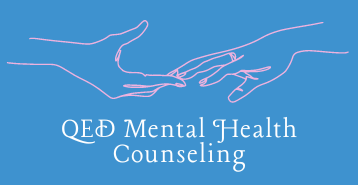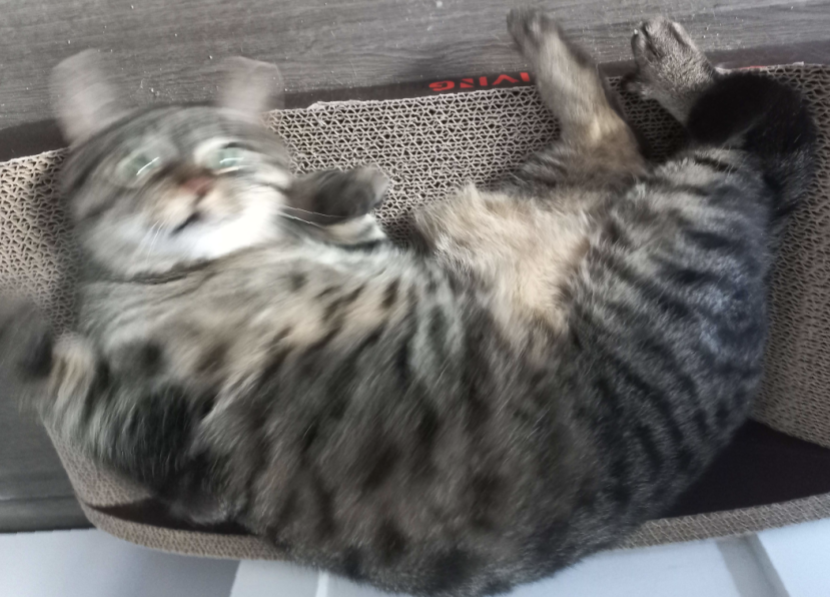The brain is built to be efficient, our survival is dependent on quick responses to perceived threats. So the brain predicts our needs based on what we’ve experienced or done in past similar situations. It then takes cues from our emotional and physical response, as well as our thoughts and behaviors. Panic attacks are usually a result of frequent and high levels of anxiety (a common state for those with OCD).
An example of the panic attack process:
- Lets say you aren’t exactly a fan of social situations. You don’t go to parties or events often, and every time you do go you feel like you made embarrassing mistakes or were generally disliked and you go home feeling worse than before. Since you have negative experiences with it, you avoid it and put off thinking about or going to social engagements as much as possible because even just thinking about it makes you feel like you feel anxious and you worry you might have a panic attack.
- Your brain learns that whenever a social situation is happening you respond to it with fear and distress. It also notices you try to avoid it. Combining those facts, that must mean any social situation is a potential threat! Now, whenever a social circumstance arises, your brain and body are prepared to defend itself.
- This is where the physical portion of anxiety comes into play. Perceived potential threats = the body going into defense mode where your Sympathetic Nervous System reacts. The fear and anxiety cycle creates a sensory overload that makes it feel like you’re zoning out or going to black. Your adrenaline is going wild, your blood pressure and heart rate is up (which is what makes your chest feel tight), and your body sends most of the oxygen in your system to your muscles because your brain is preparing you to run away from the threat (the sinking stomach feeling is your blood leaving the gut to put more oxygen into muscles). We’re built to recognize and attack/run from large animals or any other more immediate dangers, the fact that a social situation only feels like it will kill you doesn’t matter to the brain or your body.
- You notice the physical sensations of panic which makes you get even more anxious. You start to think “oh no, is this a panic attack? What if I have one? What if I stop breathing? I hate that feeling I really want this to stop!”
- Those thoughts and fears are interpreted by your nervous system as “wow the threat must be REALLY BAD, we should prepare even more for a threat! The anxiety gets worse, and a panic attack may follow.
Panic Attacks May Feel Awful, But it’s Actually the Body Protecting Itself:
This means that even if it feels like you aren’t breathing or getting enough breath, that doesn’t mean it’s truly a physical danger. Your body is trying to keep you alive and safe in the face of a threat/danger. Stopping you from being able to breathe is definitely in the unhelpful category as far as your body’s “safety system” goes.
The blood and oxygen that gets sent to your muscles for optimal movement/running is noticeable when you’re feeling hypervigilant. It makes you feel that stomach sinking and chest tightening, which often causes you to go, “oh no my breathing isn’t working” and the anticipation of it getting worse causes us to take even shorter breaths which reinforces the assumed theory that you can’t breathe.
So even though it can feel horrible and dangerous, your brain and body are just trying to keep you alive. You are actually still breathing even if it really feels like you aren’t or can’t. It has no interest in hurting or killing you, quite the opposite.
The cycle of anticipated fear, what if questions, physical sensations of anxiety, and avoidance or distraction feed into each other and reassure the brain it is right to mark the anxiety-provoking material as dangerous. Which makes it difficult to think we could ever possibly not freak out about whatever upsets us.
If your brain is caught in the above cycle, you are thankfully not stuck this way forever. We can change it with new behaviors and train it to have different and less anxiety-provoking thoughts. We can also use Exposure and Response Prevention Therapy (ERP) to habituate to currently frightening circumstances/experiences in a way that the lower-performing fear extinction circuits respond better to. Cognitive Behavioral Therapy (CBT) is a reliable method of decreasing anxiety and panic attacks in most patients. For anxiety and panic in general, many studies show ideal treatment success from a mix of medication and psychotherapy- personal preference matters, and many people have achieved improvement with only one of the two if you are uncomfortable with medication or psychotherapy.
This process takes some time, but plenty of people of all ages have managed it and the process might not be fun but it still isn’t as painful as living with severe anxiety and panic attacks. You’re already doing the harder thing, so you might as well put in the effort to reduce anxiety and live a less restricted and distressed life.
If you find yourself feeling like you’re going to have a panic attack:
- Remember: panic attacks are your body trying to keep itself alive in the face of danger, you won’t die.
- Panic attacks ALWAYS PASS. They usually last less than 10 minutes from start to finish.
- Try drinking or splashing your face with cold water, breathing slowly (inhaling for 3 counts, holding for 3, and exhaling over 3 to start, or even a higher number if you can manage it), focusing on a specific person or object in the room (how it feels, how it looks, how it smells).
- Don’t try to force yourself to ‘relax’, this is a vague command we tend to yell at ourselves- similar to “calm down.” Instead, it’s more helpful to focus on letting go of extra tension in your body. Shaking our your arms and legs, getting some fresh air, eating something with a strong flavor, or progressive muscle tension and relaxation can help.
- Whether or not the panic attack happens you will be okay, panic comes and goes the same way anxiety comes and goes. You’ve survived it before and you will survive it again.
- Accept the anxiety and face it directly rather than trying to force it away or stop it. Anxiety and panic- although frightening – cannot do you any ACTUAL harm at all. Ironically, when you accept the panic and anxiety you let your brain know to stop hitting the fight or flight response so your symptoms reduce. Acceptance of the panic or fear lets you get through the feeling faster and more easily with less distress and discomfort.
Implementing these things by ourselves is entirely possible, though it can be difficult without outside assistance if you’re struggling significantly. An experienced therapist is ideal, if it is possible to afford, to guide you through the barriers and problem spots that will come up. They can also provide you with more skills and tools for handling panic and anxiety in other areas.
Sources/Learn More:
- Bandelow, Borwin; Reitt, Markus; Röver, Christian; Michaelis, Sophie; Görlich, Yvonne; Wedekind, Dirk. Efficacy of treatments for anxiety disorders: a meta-analysis. International Clinical Psychopharmacology 30(4):p 183-192, July 2015. | DOI: 10.1097/YIC.0000000000000078
- Sayo Hamatani, Kazuki Matsumoto, Eiji Shimizu, Long-term effectiveness and cost-effectiveness of guided internet-based cognitive behavioral therapy for obsessive-compulsive disorder: 24-month follow-up. 2024 DOI:10.1016/j.invent.2024.100725 https://www.sciencedirect.com/science/article/pii/S2214782924000186#ab0010
- Shin LM, Liberzon I. The neurocircuitry of fear, stress, and anxiety disorders. Neuropsychopharmacology. 2010;35:169–191. [PMC free article]
- Goddard AW. The Neurobiology of Panic: A Chronic Stress Disorder. Chronic Stress. 2017;1. doi:10.1177/2470547017736038
- Gorman, J. M., Kent, J. M., Sullivan, G. M. & Coplan, J. D. Neuroanatomical hypothesis of panic disorder, revised. Am. J. Psychiatry 157, 493–505 (2000). https://ajp.psychiatryonline.org/doi/10.1176/appi.ajp.157.4.493
- Kyriakoulis P, Kyrios M. Biological and cognitive theories explaining panic disorder: A narrative review. Front Psychiatry. 2023 Jan 30;14:957515. doi: 10.3389/fpsyt.2023.957515.


Comments are closed